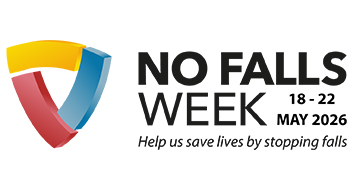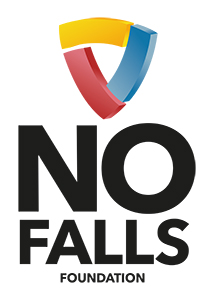Saving lives by stopping falls
Latest news

- 07/11/2025
Work at height charity shines spotlight on height safety during
No Falls Week 2026
The No Falls Foundation, the first and only UK-based charity for the work at height sector, is proud to be holding its third annual ‘No Falls Week’ from 18 – 22 May 2026, to promote safe working at height.
Following the success of their previous campaigns, which have so far seen over 3,600 organisations sign up to take part, No Falls Week returns to raise awareness about the importance of safe working at height, prevent falls and ensure everyone that works at height comes down safely.
It is estimated over 1 million businesses, and 10 million workers, carry out work involving some form of working at height every year1. No Falls Week provides the opportunity for organisations across all sectors to place a focus on work at height safety.
Falls from height are consistently the leading cause of workplace fatalities in the UK, with 35 people losing their lives at work due to a fall from height in 2024/20252. Latest figures from the Health and Safety Executive (HSE) show that falls from height were responsible for almost one third of all workplace deaths last year. This is almost twice as many as the second most common kind of accident, ‘Struck by a moving vehicle’. This latest figure may represent an 8% reduction from 2023/24, however, prior to that, the proportion of falls from height continued to rise, reaching an unacceptable 36% last year3.
As awful as the fatality statistics are, there are an even greater number of non-fatal injuries resulting from a fall from height, with almost 5,000 people in Great Britain having been reported injured at work in 2024/254. However, the No Falls Foundation know there is substantial underreporting of non-fatal falls from height for all workers, particularly the self-employed, who were found to report just 12% of workplace incidents5. According to the self-reported accidents from their preferred source, the Labour Force Survey (LFS), the HSE estimates the number of workplace falls from height over the last 10 years may be up to 425,000 (between 2014 – 2024)6.
Along with the lives, families and businesses affected by these accidents, up to 688,000 working days were lost through non-fatal falls from height in Great Britain in 2023/24 alone7.
Not only that, the latest figures from 2023/24 show the total cost of falls from height was estimated to be over £956 million, made up of costs to the employer and the individual, government tax losses and benefit payments8.
Hannah Williams, Charity Manager at the No Falls Foundation, said: “Too many people are still being killed falling from height. In the last five years, 188 people have been killed because of a fall from height. Over the last 10 years, that number rises to 361, enough to fill a jumbo jet9.
“These deaths are not just statistics. Behind every number is a devastated family, group of friends, colleagues and employers who are left to face the long-term consequences these accidents can have.
“That’s why No Falls Week is so important. Whether you work in construction, manufacturing, agriculture or any other sector, No Falls Week is an opportunity for everyone to shine a spotlight onto the mental, physical, and societal consequences of working at height accidents.
“Everyone who needs to work at height should be able to work safely and return home unharmed at the end of every shift. If we work together, we can prevent avoidable deaths and injuries.”
Organisations can sign up to get involved in the week-long campaign via the No Falls Week website, where there are a host of toolkits and resources from members of the Access Industry Forum (AIF) to help organisations plan activities during No Falls Week.
For further information and to sign up for No Falls Week, please visit: https://nofallsweek.org/get-involved/
Sources:
1 APPG on Working at Height Report ‘Staying Alive: Preventing Serious Injury and Fatalities while Working at Height’: https://workingatheight.info/wp-content/uploads/2020/03/Staying-alive.pdf
2 RIDDOR – Kind of accident statistic in Great Britain, 2025
5 Health & Safety Executive Research Report RR528 An investigation of reporting of workplace accidents under RIDDOR using the Merseyside Accident Information Model, 2007
6/7 Labour Force Survey
8 HSE Costs to Britain Model

